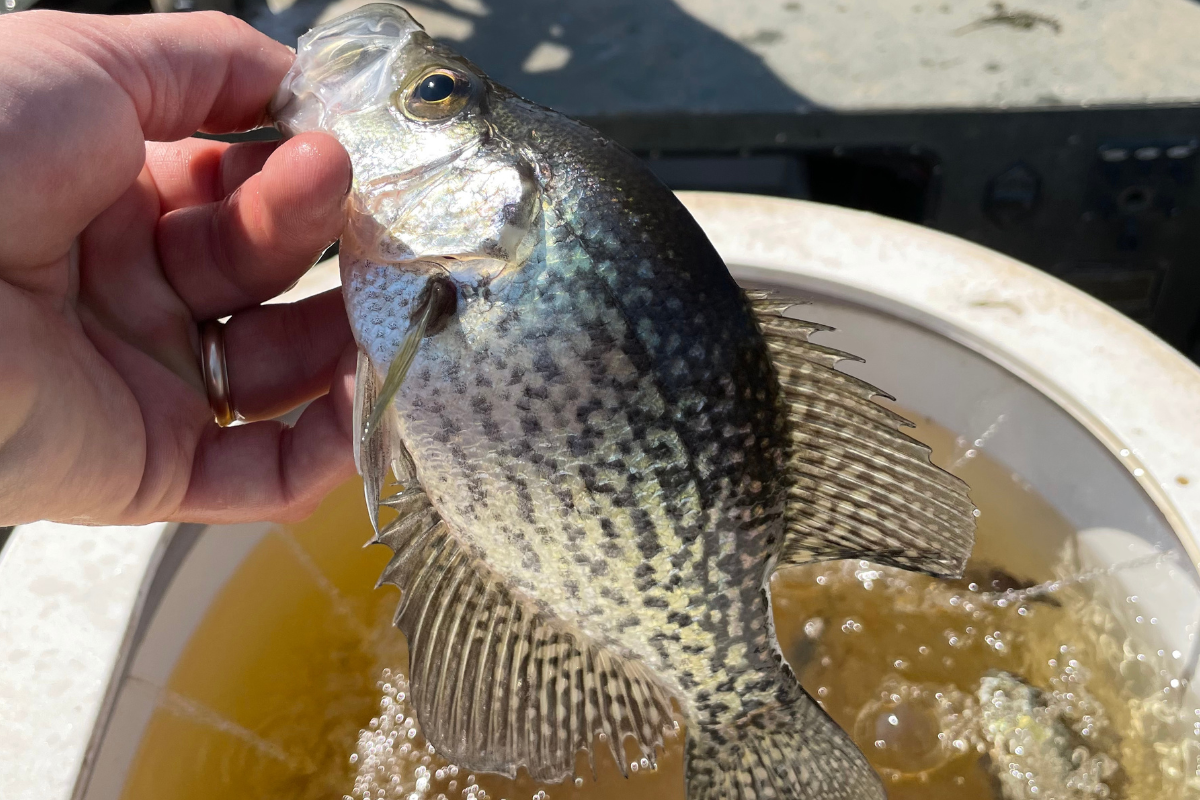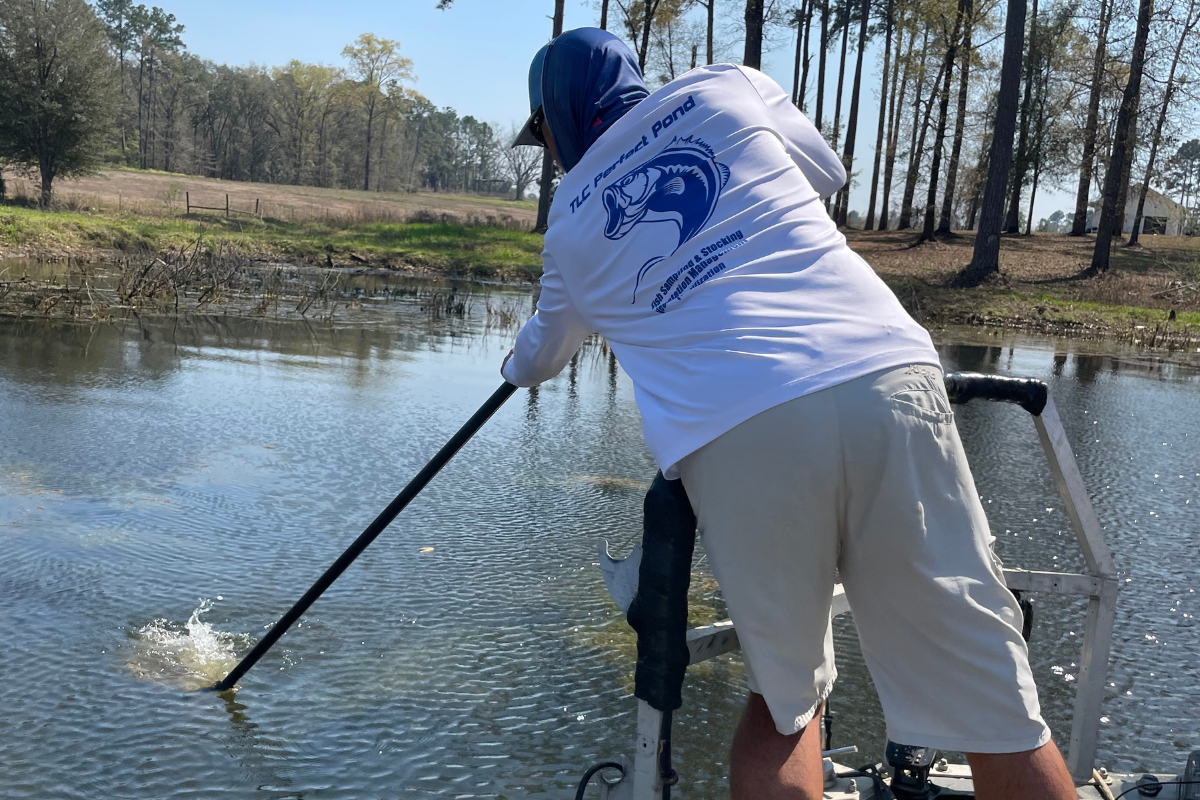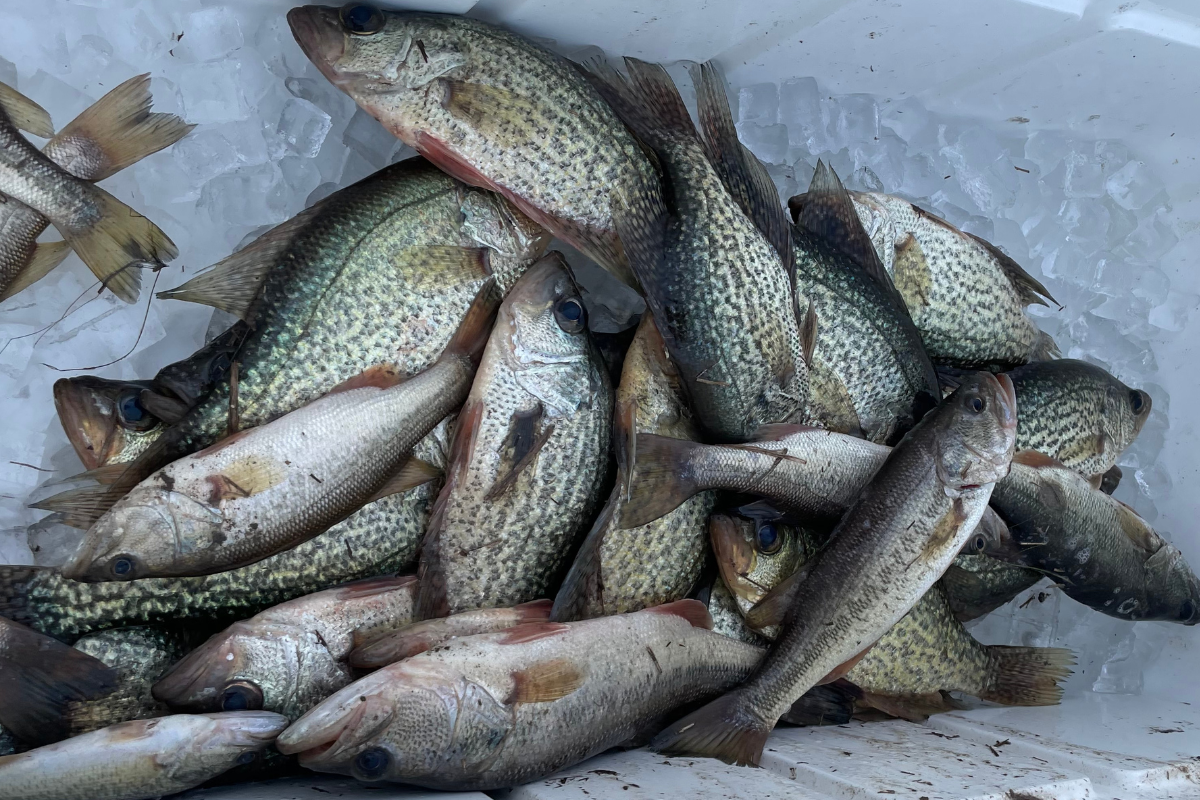Black Crappie vs Largemouth Bass
It’s no doubt that black crappie are some of the best table fare as far as freshwater fish go. Commonly called “speckled perch” in the southern states, these fish bite well in the cooler months when the bass bite is typically slower. And if you catch one of them, you’ll usually catch enough for a fish fry.
Although they’re tasty and fun to catch, crappie can create some signifiant issues for pond owners that wish to have a trophy largemouth bass population. Much like largemouth bass, crappie are predators. This means that they’ll seek the same food sources as largemouth bass, potentially limiting resources for both species.
Similar to juvenile largemouth bass, juvenile crappie will feed on small minnows and shad. If those baitfish populations become limited, they’ll also feed on bluegill and redear sunfish (aka “shellcracker”). As we’ve discussed on a previous blog, bluegill are the preferred prey species for largemouth bass. And if growing big bass is your goal, you’ll want to maximize the availability of bluegill for the bass population.
Largemouth bass are ambush predators that tend to hunt alone, but crappie are schooling predators that can quickly deplete a prey population. Crappie prefer clear water in deeper ponds with structure and are usually more difficult to find in ponds with murky water. Crappie can be a food source for larger bass. But as we’ll discuss below, the bass are not always able to keep up with the rapid reproduction that black crappie can have.

Black Crappie Reproduction
Black crappie spawning is not a well-understood subject in the fisheries community, but we do know that they have the potential to produce large amounts of offspring from a single spawning event. What we don’t know is what causes them to have huge spawns some years and insignificant reproduction numbers in other years.
In an ideal year, a reproductively-mature crappie can produce 20,000 eggs per lb of body weight. However, a reproductively-mature largemouth bass will average 4,000 eggs per lb of body weight. These estimates make it easy to see just how quickly a crappie population could become overpopulated in a pond.
Although black crappie are not guaranteed to have huge spawning success every single year, it only takes one big boom to create an imbalance in the pond. When the stars align and crappie have significant reproductive success in a single year, it can create exponential problems in future years. As the high number of black crappie offspring grow, they’ll quickly begin to deplete resources for all predators in the pond.
An overpopulation of crappie will not only reduce resources for largemouth bass, but it will also eventually stunt the black crappie population itself. This means that you’ll have an overabundance of small black crappie that never grow to full size. This is why crappie populations can make population management very difficult. Their inconsistent reproduction numbers and their potential for large reproductive events make it almost impossible to keep predator and prey populations in balance.

Can Black Crappie and Bass Coexist?
You can have populations of black crappie and largemouth bass in the same pond, but it’s not sustainable over the long haul. As mentioned above, the black crappie will eventually have a huge population boom which will limit forage for both species and make management extremely difficult. As such, we usually discourage stocking black crappie and largemouth bass in a new pond.
But what if you have an existing pond with both species? Is there any way you can manage both populations effectively? It’s possible, but it takes some very active management. The first thing you can is catch every black crappie you catch, regardless of size. This seems counterintuitive to standard fisheries management practices, but this will help to reduce the likelihood of rapid overpopulation in the future.
Another option is to make sure you have plenty of largemouth bass in the pond. A strong largemouth bass population will help to keep the black crappie population in check to some extent, although a heavy reproductive event by the black crappie might counteract any bass predation. If the crappie population becomes too abundant, it’s not a bad idea to stock some larger bass to help with this. But do this with caution. You don’t want to hurt your bass population by overcrowding it as well.
The last option is one that’s probably not feasible for most pond owners. This would be drawing down the water in the pond on a yearly basis so that the crappie are easier for the bass to catch. This would increase the predation on the black crappie and help limit the potential population booms. Not every pond owner has an easy way to drain and refill their ponds, so this won’t be a viable solution for everyone.
As you can see, there are numerous problems that abundant black crappie population can cause in a small pond. There are management tactics that can be used, but they’re not always going to be successful. The best option would be to only stock black crappie if your pond is 20 acres or larger. And if your pond is smaller than that, determine whether you want a booming black crappie population or a booming largemouth bass population.


